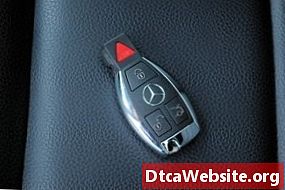
Contenu

Tar is sticky because its a thick, heavy hydrocarbon, so removing it usually starts with thinning it down using lighter hydrocarbons like solvents or oils. In the past, those afflicted with tar splatters had to rely on home-brewed concoctions involving diesel fuel, penetrating oil and even peanut butter. Now though, there are many products out there specifically designed for the job. Just make sure to keep your car off the grass or concrete, lest you end up taking the tar off your car and leaving a stain on your concrete or a dead spot on your lawn.
Applying the Product
Step 1
Wash the car thoroughly before attempting to remove the tar. Any grime or dust over the tar will soak up and may chemically neutralize the removal product youre using. Allow the car -- and especially the area with the tar -- to thoroughly air-dry in a shaded area.
Step 2
Specialized bug and tar removers work much, much faster than old-school, home-brew removers. Thats especially true of the latest organic citrus-derived removers, some of which start working almost instantly. There are literally dozens of brands out there, many available at your local auto parts store; the non-chlorinated, citrus-derived types work best, and are generally safest for you and your cars paint. The procedures for each of these vary depending on the particular product, so follow the package directions. Generally speaking, though, youll either liberally spray the product on or wipe it on with a rag.
Step 3
Allow the remover time to work. Generally, the longer the better, and overnight isnt a bad idea for the safer brands, but some have a maximum time limit on how long you can leave the remover on without damaging the paint. Youll know its started working when you see the tar start "melting" and running down the car body in light-brown rivulets.
Step 4
Apply a liberal amount of the removal product to a folded-over microfiber towel, and start firmly scrubbing at the tar. If alls gone well, all or most of the tar will come off now. If you used a good quality solvent- or citrus-based remover, you may only need to rub the area lightly to remove clinging tar, and rinse the rest off with a jet from your water hose. Otherwise, a bit of scrubbing and rubbing may be in order. Throw the towel away afterward -- youll probably never get the tar out of it, and its a fire hazard just lying around the shop.
Step 5
Once youve removed all the tar, wash and rinse the area thoroughly. Some like to give the area a quick wipe with mineral spirits or other mild solvent to remove any remaining residue, but you always run the risk of damaging your cars paint when you apply any kind of pure solvent to it. For these purposes, rubbing alcohol works just as well, and is much safer for your paint. Apply some to a rag, and wipe the area down.
Step 6
Many at this point will take this opportunity to hand-polish the area. Its not a bad idea, since its possible you may have pitted or dulled the finish with solvents. If you used solvents or a solvent-based tar remover, dont machine-polish the paint in the area. Its possible the paint or clearcoat is still soft from the chemicals, and you stand a good chance of burning right through it with an aggressive machine polish, so hand-polish only.
Thoroughly wash the polished area, and allow it to air-dry. Apply a sealant wax to the polished area. Waxing is especially important, because the wax protects your paint. Since you already hit a patch of liquid tar once on your daily drive, theres a pretty good chance itll happen again. Fresh wax will make removing the next tar splatter a much quicker and easier affair.
Items you will need
- Car wash detergent
- Specialized bug and tar remover
- Disposable microfiber towels
- Rubbing alcohol
- Car polish -- optional
- Wax


